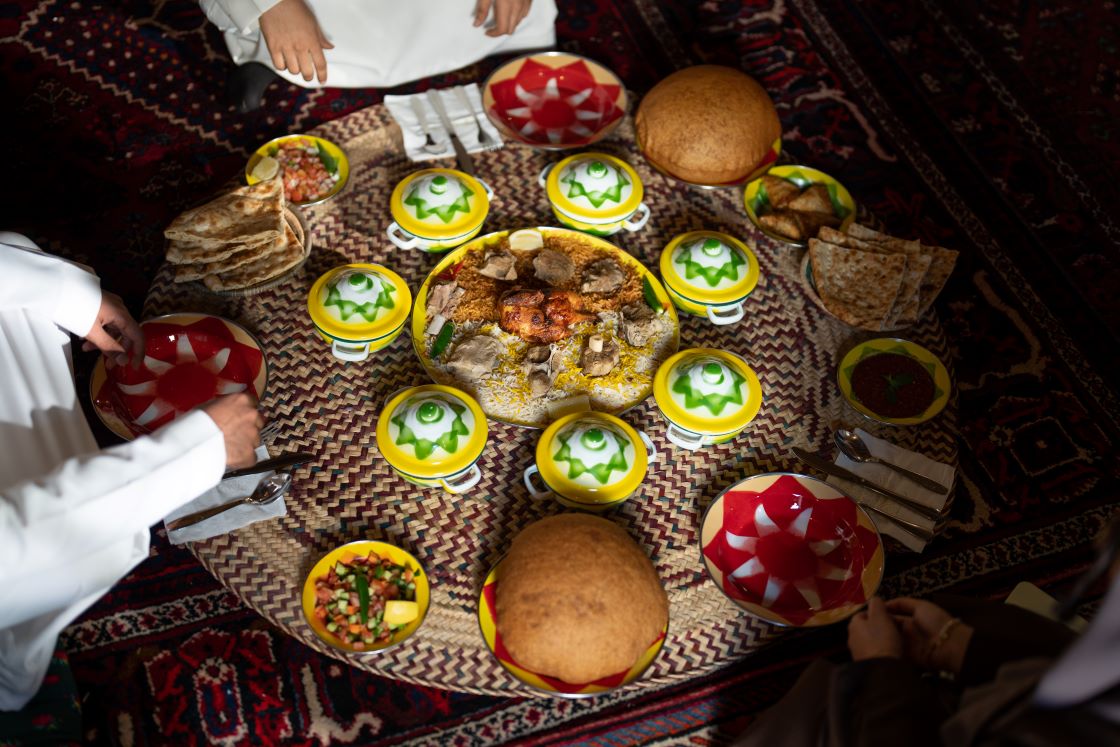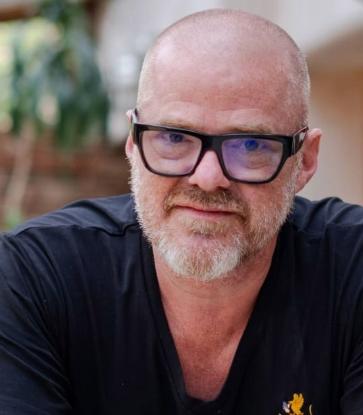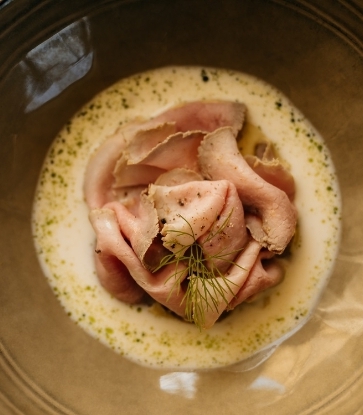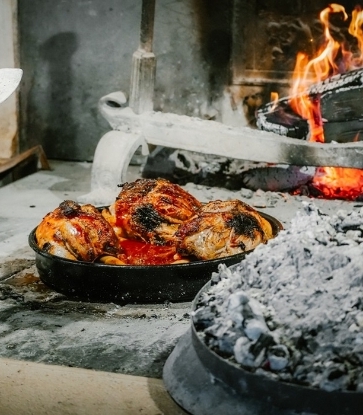When our wanderlust takes over, catching ourselves in a daydreaming frenzy with thoughts of Latin America swimmingly passing by, the mind might instantly produce a dreamy montage of the historic Incan citadel Machu Picchu high in the Andes Mountains, the stupendously surreal Uyuni Salt Flats that perfectly reflect the sky, or maybe even a majestic snippet of a Patagonian hiking trail.
While these might sound like destinations to park in one's bucket list for the time being, given their proximity from Asia (a day and half's worth of travel time), a fact that we can all revel and take comfort in is that Latin American cuisine has become more accessible in Asia, and for good reason, too. May it be the cultural connection that both regions share, or the similarities in the way we enjoy food, one thing that we can almost be certain of is that Latin American cuisine in Asia is here to stay.
We asked eights chefs who run Latin American MICHELIN restaurants in Asia to dish out their thoughts on the cuisine making its mark in the region, as well as some predictions on what's to come.

Santiago Fernández
MAZ
Two MICHELIN Stars
MICHELIN Guide Tokyo 2024
Having been awarded two MICHELIN Stars in the recent MICHELIN Guide Tokyo 2024, MAZ operates under the supervision of Virgilio Martínez, chef of Central in Lima, Peru. At MAZ, natural elements echoing Peruvian culture such as the Pacific coast, the Amazon rainforest, and the Andes, converge with Japanese ingredients, crafting dishes that beautifully showcase the distinctiveness and diversity of both nations.
"In my opinion both Asian and Latin American cuisines share a strong cultural legacy behind them," says Santiago Fernández, chef of MAZ. "Traditional techniques and methods are kept intact and are highly valued. Also, both are cuisines that take advantage of the available natural elements and biodiversity. Sensibility towards nature is also a key value in both cultures," he continues.

Fernández describes Latin American gastronomy as vibrant because of two main reasons. "The first one will be the powerful identity of its people and their roots, where people are proud of their heritage and their traditions. And the second one will be the access to a mega-diverse pantry," he explains.
Latin America is at an advantage as it stands as one of the most biodiverse locations in the world, allowing massive opportunities for development and creation. Fernández cites the ancestral cooking technique called "Huatia" as an example, where roots and vegetables are cooked underground using a structure of heated rocks.
"The path for Latin American cuisine in Asia is very exciting because we are starting to see alliances between these two strong gastronomic cultures in terms of chefs, institutions, and connoisseurs," the chef expresses. "Sharing more with each other and teaching one another will provide more resources for growth. And if we continue to keep these programs and alliances, the future of Latin American cuisine in Asia will be even brighter."

Agustin Balbi
Andō
One MICHELIN Star
MICHELIN Guide Hong Kong & Macau 2023
When it comes to Latin America, it is pertinent to grasp that this is, indeed, a vast area of land, and with that comes plural ways of eating brought forth by the bounty of ingredients and depth of history involved.
Andō's Agustin Balbi comes from Argentina, located at the southern part of Latin America. "Buenos Aires was where the Virreinato del Río de la Plata (Spanish Colonies) had their main port, so you can imagine the Spanish influence in our food culture," he shares. "We also welcomed more than two million Italians, and you can see that they also left an impact on the way we eat."
Balbi shares how Argentina's national dish, a traditional stew called Locro, made with squash, osso buco, sausages, corn, modongo (beef tripe), and aromatics, is a testament to this melding of cultures. Commonly found in most of South America, Argentina's version visibly has more beef.
The Empanada is another such dish brought by the influences of Spain. "Though empanadas are common throughout Latin America, they still differ from country to country," explains Balbi. "Every region has their own style. In Argentina, we use wheat flour for our dough, but other countries use corn, for example." The filling of the empanadas also varies. "Salta", for instance, is a spicy blend that uses beef, potatoes, and chillies, whereas in "La Rioja", hard-boiled eggs and raisins are used, and in "Mendoza", olives are added.
"There are a number of ways to prepare empanadas, but the most important one for our local gastronomy is the 'Criolla', which comprises hand-cut beef, onion, hard-boiled egg, green olives, and cumin," says Balbi. The way the empanada is folded (known as Repulgue), also varies. It can be done by hand and have up to 13 folds, while other countries may use a fork. Once folded, the empanadas can also be either fried in pork fat or oven-baked.

"I would say that Latin American and Southeast Asian cuisines both love making use of spices, dried and fresh chillies, coriander, and citrus. Having rice as the main source of carbohydrates is also a similarity shared with the Caribbean region. Again, Asia's fondness in using acidity and spice is shared with countries like Brazil and Peru, as they have a lot of Japanese and Chinese immigrants," Balbi explains.
"Both food cultures have influenced each other quite a lot. For example, can you imagine Thai food without chillies or empanadas without cumin? It's almost impossible, right? But neither of both ingredients are native of their own cuisines. That exchange of ingredients has made gastronomy so deliciously wide and pregnant with a vast number of gastronomic opportunities," he expresses. "I believe that the physical distance between Latin America and Asia is getting shorter and shorter. Hopefully, more Latin chefs will come to Asia to showcase their native food."

Ricardo Chaneton
MONO
One MICHELIN Star
MICHELIN Guide Hong Kong & Macau 2023
Venezuelan-born Ricardo Chaneton expresses that he shares similar ways of eating with his Asian peers. "I noticed both cultures are rich in food superstitions. In Asia, you are taught not to leave even one grain of rice in your bowl — I was taught the same with food growing up in Venezuela," he says.
According to Chaneton, apart from the use of spices, citrus, and chillies in both Latin American and Asian cuisines, both cultures also rely more on using oils and fire techniques to impart flavour, as compared to dairy. When it comes to eating, sharing plates are the commonality, emphasising convivial noshing with family and friends.
Latin American cuisine, being deeply rooted in heritage, can be traced to the ancient civilisations of the Aztecs and Incas, among others, who have contributed the culture's uniqueness. This uniqueness and celebration of tradition is truly evident in its cuisine.

Another fact about Latin American cuisine is that the region produces some of the most widely utilised agricultural products in the world, including corn, coffee, potatoes, and certain fruits. "These are just a few of our native ingredients that have fed the world and have been a part of our world history for many years," shares Chaneton.
When asked about what dishes Chaneton feels are representative of the cuisine, he talks about arepas, which are bread-like patties made with corn, which are steamed, dried, ground into flour, and then made into bread. The arepas are cooked on a cast iron pan and stuffed with the desired filling (usually cheese). "Arepas originated from the indigenous tribes that inhabited what is now Venezuela and Colombia," explains Chaneton. "The word ‘arepa’ is derived from the Cumanagoto term ‘erepa,’ meaning 'corn'."
Chaneton also shares that at MONO, what started out as him solely serving Latin American cuisine has now evolved into a line-up of dishes that tell of the his story. "I’m excited to see more Latin American restaurants in Asia, where not only Latin American dishes are served, but also an edible education of Latin American culture, history, and hospitality," he says.

Joaquin Elizondo
ZEA
One MICHELIN Star
MICHELIN Guide Taiwan 2023
"If I were to describe Latin American cuisine with one word, I would say 'generosity'," says Argentinian chef Joaquin Elizondo of MICHELIN-Starred ZEA in Taiwan. "Whenever someone hosts you, they will usually do something out of the ordinary. In Argentina, we are known for our barbecue. Nowadays, meat can be quite expensive, but if someone invites you over, you can expect something a little fancy but still full of heart."
Elizondo continues, "I believe Latin America is a melting pot for everything — apart from generosity, the concept of diversity applies here, too. Our society and food are also inclusive of a lot of things."
The chef says that Maté Tea, also known as Yerba Maté, is the national beverage of Argentina. Similar to Asia, the tea is also widely consumed in other countries in Latin America — a sharing ritual. "It's our own Latin American tea ceremony!" Elizondo exclaims.
"Maté Tea brings beautiful spring notes, and it’s a perfect marriage of flavours for me," he shares. "Currently, we have a Taiwanese leatherjacket, poached in maté tea infused lard, paired with lily bulbs and ginger lily. The name of the dish is called 'Dos Mundos' — a dish from both worlds."

Elizondo also believes in the need to build a network amongst Latin Chefs. "There is so much more to discover about our traditions, know-how, and food culture in general. Also, we need to encourage producers to explore more Latin produce and consumers to venture into incorporating them in their diet, something that is slowly starting to happen. We need time and patience to root and develop in a healthy way, a perfect middle ground where everyone can benefit out of this cultural exchange," he says.
"I believe that Asian and Latin American cuisines are bonded by generosity as the main bridge. Both regions have also gone through many social and economic challenges through the years, and that’s why we are always longing for those experiences where you are given more than what you expect. I have been in Taiwan for a couple of years already, and the more time passes by, the more at home I feel. Here, people offer you everything they have with an open heart, in a very proud way, and with no measure," he expresses.

Diego Fernando Sánchez Vargas
Amazónico
Selected
MICHELIN Guide Dubai 2023
"Latin American cuisine stands out for its unparalleled uniqueness; shaped by centuries of cultural influences across the globe, spanning continents from Europe and Asia to the Caribbean, without losing the identity of our native communities. This has been our core even before the colonisation," shares Diego Fernando Sánchez Vargas of Amazónico in Dubai. "All this diverse culture gives our cuisine an authentic flavour that is both distinctive and challenging to replicate. A prime example of this culinary heritage is found in dishes such as anticuchos, derived from the Quechua language."
A centuries-old dish, anticuchos is a panka (a Peruvian red pepper) chilli paste that used to marinate meat before being roasted on coals. "This serves as a testament to the enduring Latin-American traditions. Cooking methods like these are still being used today, especially in Amazónico, such as the fermented corn drink chicha, which we use in traditional dishes with lamb and coriander," shares the chef.

"Asia definitely has a massive influence on Latin American cuisine, especially from countries such as Japan and China, which is very evident in Peru and Brazil, so there are definitely similarities in terms of flavour," Vargas says. While the chef believes that Asia is fertile ground for Latin American cuisine, his main concern lies on the carbon footprint required to transport ingredients.
"Ingredients play a big factor in creating good cuisine, and in an era where guests and consumers emphasise responsible resource usage, it becomes even more important to consider the environmental impact against the desire to offer a unique culinary experience," he says.

Francisco Paco Ruano
Ojo Bangkok
Selected
MICHELIN Guide Thailand 2024
"What truly makes Latin America a culinary wonderland, beyond its spot on the map, is the incredible fusion of cultures that has shaped its food scene. Think Spanish and Portuguese influences mingling with a dash of French flair in certain spots, and the vibrant African contributions adding zing to Caribbean flavours. There's this magnificent patchwork of tastes and traditions that paint a vivid culinary picture," says Ojo Bangkok's chef, Francisco Paco Ruano.
For Ruano, trying to pinpoint one dish that sums up Latin America is like trying to catch a shooting star, but, to him, certain ingredients such as corn steal the show.
"It's not just a star in Mexican cuisine, but also struts its stuff in South American dishes like arepas, boiled chocolate, and empanadas," he shares. "Corn doesn't stop there — it's a headliner in various forms, too, across Brazil, Argentina, and Chile, making appearances in different styles of polenta."
Helming a Latin American restaurant in Bangkok, Ruano is convinced that Mexican and Asian cuisines, especially from South Asia, share quite a few similarities such as the mutual love for heat, herbal kicks, tangy twists, and a knack for fresh veggies and fish.
"These all point to a shared vibe, probably influenced by our close proximity along the Equator. It's not just about the ingredients; it's like we're jamming to the same culinary tune, just with our unique remixes," he says. "And it's not just in the kitchen; our food cultures are cut from the same cloth, too. Both celebrate vibrant societies and colourful identities that shine through in our delicious offerings. It's like we're both painting with different brushes, but the canvas tells a similar, flavourful story."

"I see the future of Latin American cuisine, especially in Asia, as strutting down the path of decolonisation, getting cosy with its roots. Ingredients are doing a happy dance, folks are starting to groove with indigenous cultures, and each region's heritage is getting its time in the spotlight. It's like the whole world's waking up to the deliciousness! And mark my words, we're in for a tasty treat with more rocking Latin American restaurants coming up, putting their hometowns on the map in a big, flavourful way."

Adrian Chong Yen
Sol Kitchen & Bar
Selected
MICHELIN Guide Vietnam 2023
All the way in Ho Chi Minh City, Latin American cuisine continues to make waves in restaurants such as MICHELIN-Selected Sol Kitchen & Bar, helmed by Adrian Chong Yen. "Latin American cuisine is very unique, partially due to all the exotic ingredients that we don’t see much of in Asia, especially all the different varieties of chilies," says Yen. "To me, a dish that screams Latin American would be ceviche. It's is a dish made from very fresh seafood, usually white fish, and then cured in lime juice, aji paste, onions, coriander, salt, and pepper. Simple yet delicious."
Ceviche, indeed, finds cousins in South East Asian countries. Kinilaw in the Philippines, for example, is a seafood dish that follows the same curing techniques, but swaps the citrus for vinegar. Thai people, too, eat their raw seafood with lots of chillies, garlic, and lime juice.
"In my humble opinion, I also think that Asian and Latin American cuisines are almost identical, especially with how they are enjoyed," the chef expresses. "Apart from the styles of cooking, the way meals are shared are quite similar, too."

"When it comes to Asia being the next destination for Latin American cuisine, I think it's definitely happening. Asia has been receiving a lot of attention when it comes to Latin American cuisine over the past couple of years, and I think we're bound to see more restaurants appear," predicts Yen.
"With all our shared similarities in terms of culture and palates, it's not hard to see that Asians will continue to embrace it."
Header image and Arepas image are from Shutterstock.





















